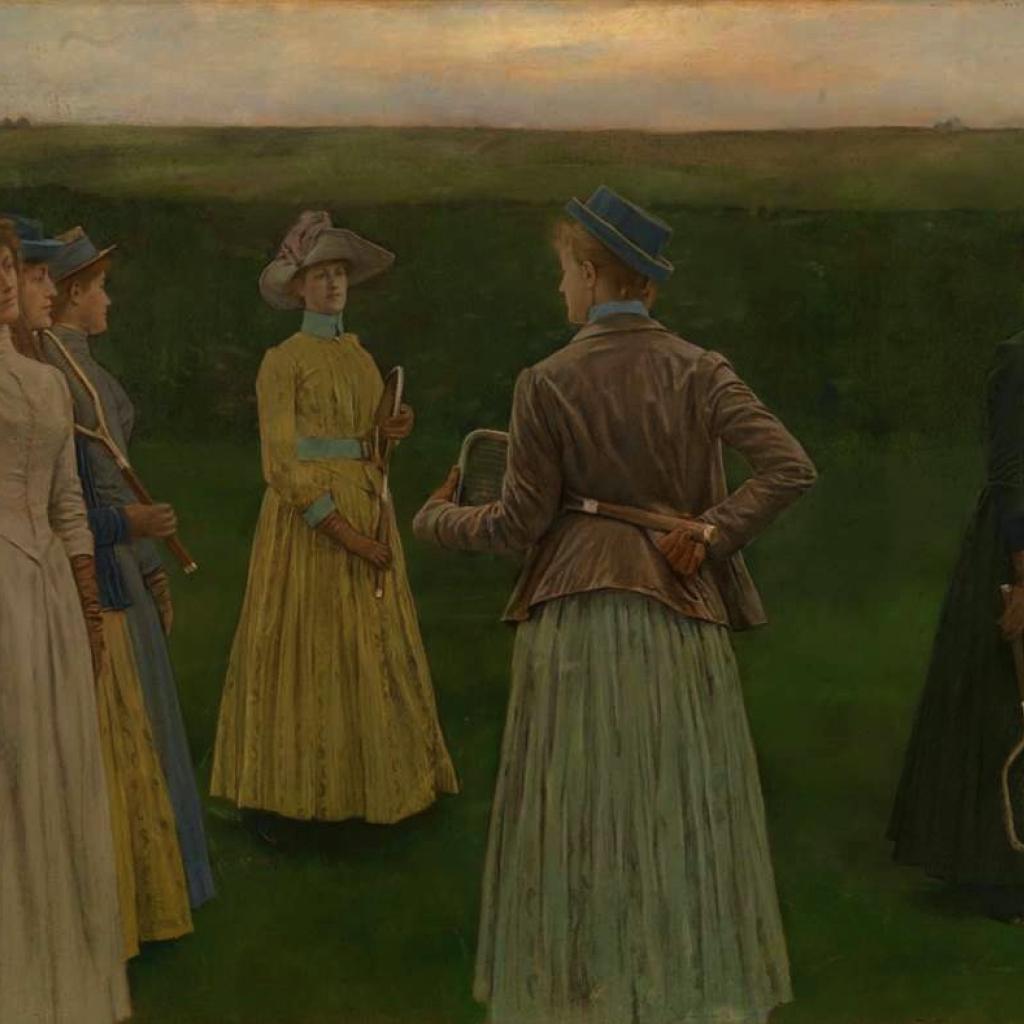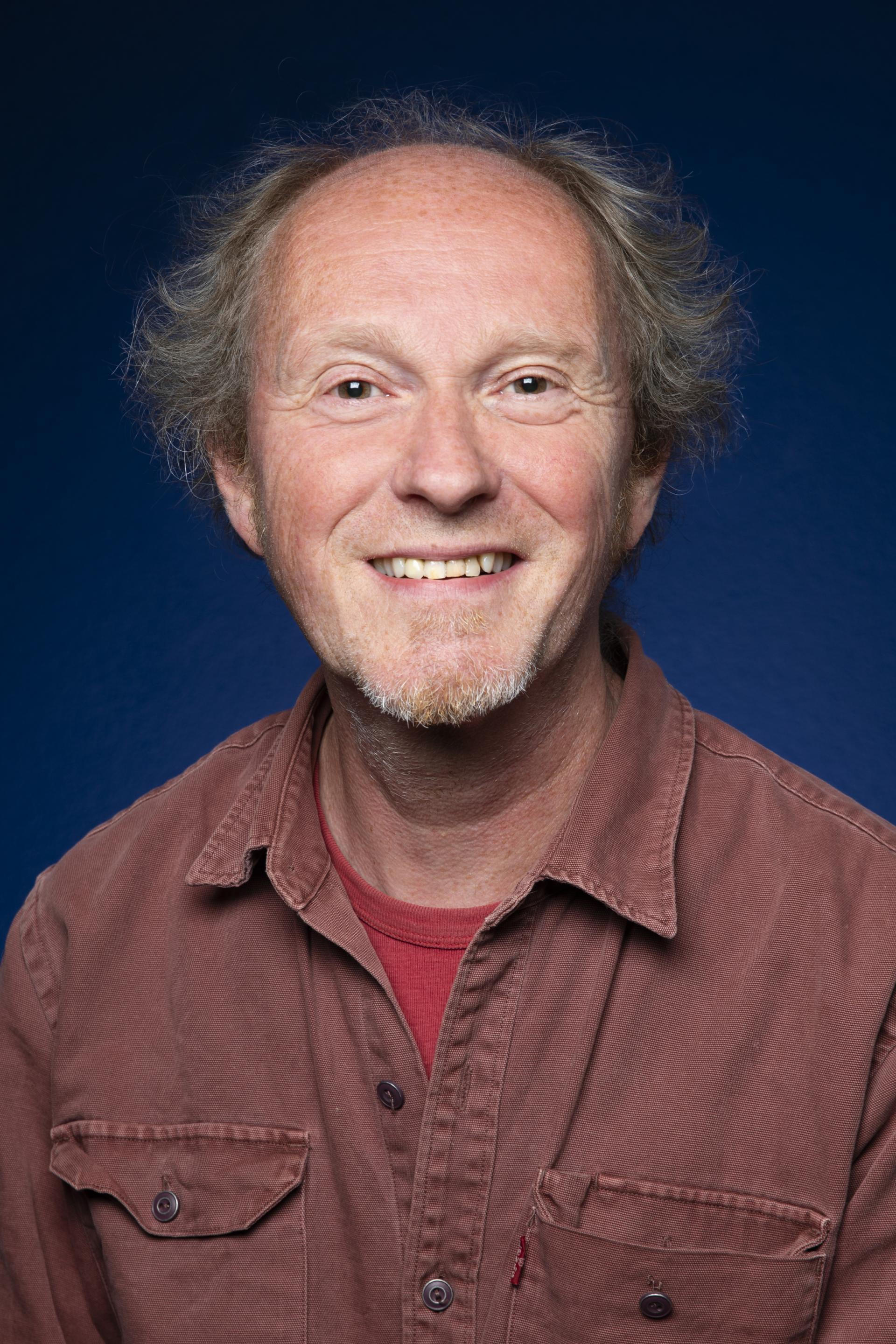Herman Adriaan van Karnebeek

In the series on striking figures from contemporary artistic and cultural life, this episode, written by curator Hans Wijgergangs, is about Herman Adriaan van Karnebeek (1874-1942). He was mayor of The Hague during the nineteen tens and features in countless photographs of official gatherings and formal occasions in the Royal Residence. His distinctive appearance also turns up regularly in the collections of the RKD.




Elegantly clad figures
Three gentlemen in long coats, with top hats and umbrellas or walking sticks in hand, move through a park-like landscape. Their contours are so much more defined, their physiognomy so recognizable, that they immediately stand out among the other figures dotted across the landscape. On the left, a lady holds her hand to her hat; beside her a gentleman adjusts his top hat, as if it might be carried off by a gust of wind at any moment. In the background, small groups of elegantly clad figures are seen to be strolling, apparently representatives of the upper class. At first glance this image would appear to depict an every-day scene. Upon closer inspection, the rectangular stone slabs which cover the sloping field soon become noticeable. The year is 1911 and the location is the Jewish Cemetery in The Hague. Famous artist Jozef Israëls has just been buried and the ceremony being over, the guests are leaving the naturally landscaped cemetery in the Scheveningse Bosjes.
Three familiar faces
Because of the way the seemingly timeless figures are positioned, the beautifully composed photograph is reminiscent of the kind of symbolist paintings made by Jan Toorop or the Belgian artist Fernand Khnopff, waarin elegante dames in dromerige landschappen zijn weergegeven. In het driemanschap op de voorgrond zijn van links naar rechts Herman Adriaan van Karnebeek, Aritius Sybrandus (Syb) Talma en François Pieter ter Meulen herkenbaar, drie bekende gezichten uit het vroeg twintigste-eeuwse Den Haag. Talma was minister van Landbouw, Nijverheid en Handel, Ter Meulen was schilder en voorzitter van Pulchri Studio. Van Karnebeek was, als burgemeester van Den Haag in de jaren 1911-1918, zeer gezien en schijnbaar alomtegenwoordig.








Wedding portrait
Before being appointed mayor of The Hague, Van Karnebeek worked as a solicitor at the Department of Colonies. At one time described as an ‘impeccable diplomat and minister, who was rather pleased with himself’, in 1902 he married Adriana Justine Civile van Wassenaer (1882-1944). The RKD has a photograph of the newly-weds. It shows Herman Adriaan in a dark suit with a light waistcoat, standing behind a small table. He is looking at his wife, who poses with her right arm leaning on the table, in a light-coloured, high-necked dress with corsage.
Portrait by Franz Melchers
In 1915, Dutch artist Franz Melchers (1868-1944) painted a portrait of the mayor, who peers somewhat haughtily through his spectacles from under his signature top hat. The likeness was striking, judging from a critic who saw the portrait at an exhibition and made mention of ‘our mayor […] as we often see him walk, top hat tilted slightly back. The likeness is delightful.’ With his distinguished, aloof appearance and immaculate style of dress, the mayor displays the typical characteristics of a dandy. Melchers too felt attracted to this lifestyle, which combined a cool reserve with affected ostentation.
After a successful career as a minister during a period of political unrest, Van Karnebeek was awarded the honorary title of Minister of State in 1927. The Hague society painter Antoon van Welie (1866-1956) made a portrait of van Karnebeek in a confident posture, hung with regalia, decorations and medals, coat thrown loosely over his shoulders.
Portrait by Koos Speenhoff
In 1928, Rotterdam artist, musician and composer Koos Speenhoff (1869-1945) painted a portrait of Van Karnebeek in an angular style. The mayor of The Hague is recognisable by the heavy eyebrows, the neatly combed back hair and the solemn expression. Unlike Speenhoff’s earlier repertoire of satirical songs, the portrait is not intended to be caricatural or ironic. At the time of this mayoral portrait, Speenhoff had moved on from being a popular folk singer to becoming a reactionary moralist. In 1945 he tragically died during the bombing of The Hague’s Bezuidenhout district. Three years previously, in 1942, after an eventful life, Van Karnebeek had died. He was buried at Oud Eik en Duinen cemetery in The Hague.
